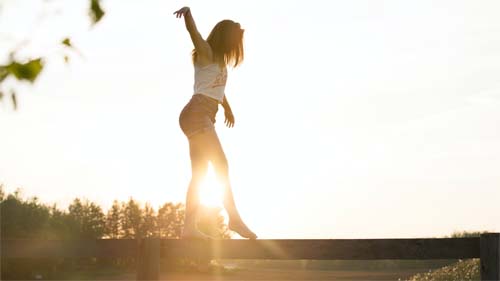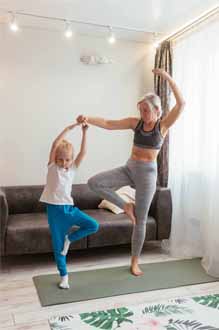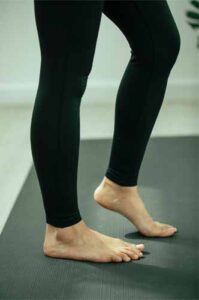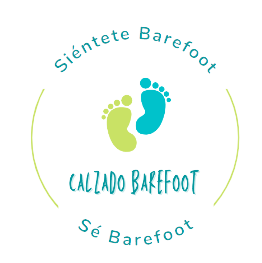Transition to barefoot footwear
Published by Ana on
Transition to barefoot footwear
Not strengthening your feet when switching to minimalist shoes is like wearing a cast for years and then not doing physiotherapy when you take it off. If you’re looking for the path to foot health, you need to think about more than just wearing barefoot shoes; you also need to strengthen the foot muscles. It’s important to remember that transitioning to barefoot footwear should be gradual and careful. Starting to wear barefoot shoes abruptly can increase the risk of injuries and pain. It’s advisable to start with short sessions of wearing barefoot shoes and gradually increase the duration as the foot muscles strengthen.

Inglés: Do you want to strengthen your feet but don't know where to start?
Don’t worry, below we provide some simple exercises so you can start improving the health of your feet.
Separe os dedos
Interlacing the fingers of your hands between the toes while making small circles is an excellent exercise for foot extension, relaxing the muscles, and improving stability. Do it for at least 30 seconds on each foot.
Walk barefoot
Walking barefoot is a natural way to exercise the feet and enhance their strength and flexibility. By walking barefoot on different surfaces, such as grass, sand, or dirt, the foot muscles are stimulated, posture is improved, and body awareness is increased. Moreover, walking barefoot can also improve circulation and reduce pain in the legs and feet.

Toe yoga
Toe yoga is yoga for the toes. It’s advisable to do these exercises sporadically throughout the week and gradually increase their frequency; your feet will surely thank you. Lift and extend your toes. Lift only the big toe while keeping the others down. Now the big toe down, the other toes up. Lift each toe individually and then lower them one at a time. You can add resistance by pressing the big toe against a finger. Don’t get discouraged if you don’t get it right the first time; everything takes time.
Using a ball
Rolling the foot over a ball is a good way to awaken the nerves. You should apply pressure on it without causing excessive pain, maintain it until you feel relief in the pressure area. You can also roll it back and forth, side to side. This exercise is better done lightly and frequently than excessively and infrequently.
Exercise for the foot arch
This exercise involves contracting the foot arch by pressing the toes against the floor, you hold it like that for a few seconds and then release. When you do this, you should feel your arch rise and a lot of muscle action throughout your foot. This is a simple, but excellent way to increase the foot’s muscle tone. Do as many repetitions as you can tolerate, surely with time and practice they will increase!
Balance
Sim, o equilíbrio é muito importante, pois os seus pés estão ligados ao seu centro de gravidade e é algo que perdemos à medida que envelhecemos.
Se o exercitar agora, agradecerá quando for mais velho! Coisas a ter em conta ao equilibrar: Mantenha o corpo centrado. O pé deve estar bem plantado, ou seja, todos os dedos dos pés devem estar a trabalhar!Yes, balance is very important since your feet are connected to your center of gravity, and it’s something that we lose as we age. If you exercise it now, you’ll be thankful when you’re older! Things to keep in mind when balancing: Keep the body centered. The foot should be well-planted, meaning, all the toes should be working!

Squatting and sitting on the floor
Did you know that the way we sit and squat (or not) affects the function of our feet? Think about it, if you sit most of the day in the same position, you’re restricting the movement of your feet/knees/hips! So if you don’t want to lose mobility, sit on the floor, squat… change your posture to keep your joints flexible!
Interval training
Interval training is an effective way to strengthen the foot muscles and improve cardiovascular capacity at the same time. Interval training involves alternating between periods of intense exercise and periods of rest or recovery. By running or walking barefoot in short and fast intervals, you can strengthen the foot muscles and increase lung and cardiovascular capacity. At the end of the exercises, don’t forget to stretch, as they are an important part of any foot exercise regimen. Stretching can help increase flexibility and muscle strength, as well as reduce the risk of injuries. Some effective foot stretches include stretching the toes up and down, as well as side to side and outward.

Successful transition to barefoot footwear
In summary, strengthening the foot muscles is essential for a successful transition to barefoot footwear and for overall foot health. Incorporating simple exercises like those mentioned above, along with a gradual transition to barefoot footwear, can help improve the strength, flexibility, and stability of the feet.
Would you like to discover more benefits of walking barefoot?
Then don’t miss our post about Earthing




